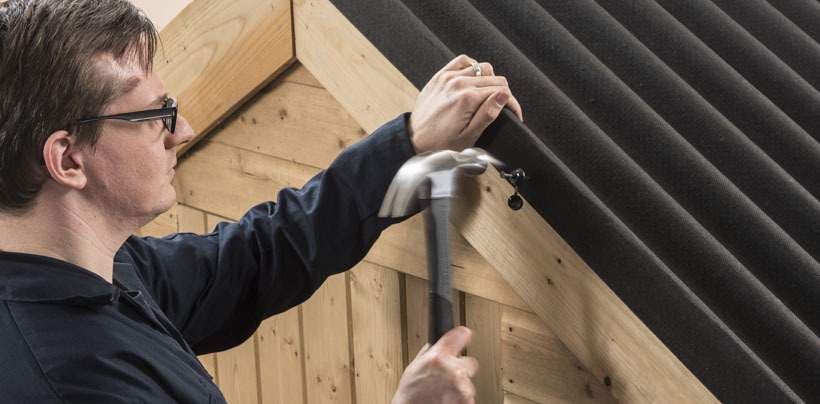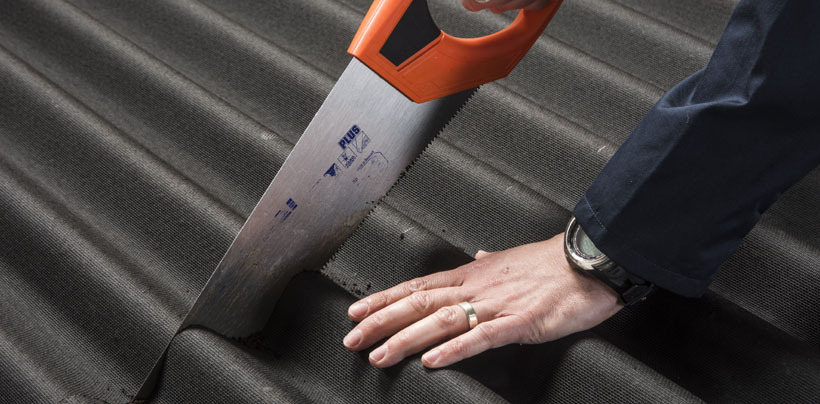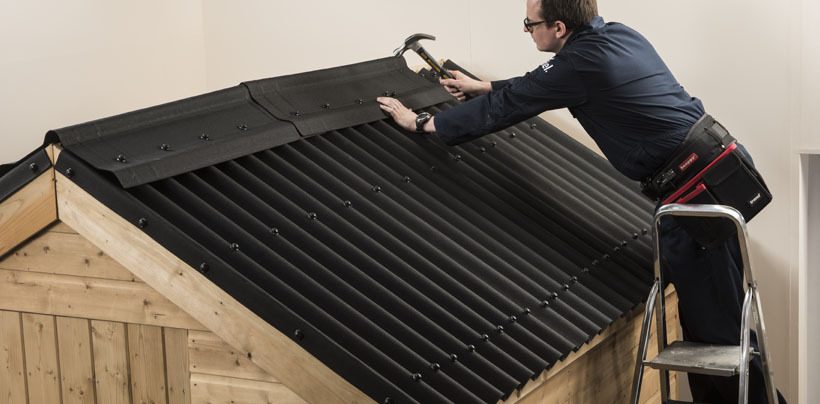How to Fit Bitumen Roofing

Bitumen is a popular roofing material that has been incorporated into a plethora of different structures for many decades now. The various properties it benefits from have led it to be widely used on sheds, garages, lean-tos and more in both rural and urban areas.
Like any roofing option, bitumen roofing sheets need to be installed properly in order to perform to their highest standard.
What is Bitumen?
You may have heard bitumen by its other popular name – asphalt. While asphalt is generally used to describe the material when applied to ground applications, bitumen is term used to describe most roofing products that utilise it into their design.
Classified as a pitch, it shares many of the properties of petroleum, and can be used for far more than just roofing, seeing use in the construction of roads and play areas among other projects. The substance is extremely versatile and considerably durable, able to withstand even extreme weather conditions.
What are the Benefits of Bitumen Roofing?
Bitumen roofing is considered a relatively quick and simple roofing option that nevertheless offers highly effective results. It is common for this material to possess a lifespan of 20 years or more, while it is also available in a range of styles and finishes for added visual appeal.
Bitumen is also very flexible thanks to the properties of the material. When laying multiple sheets next to each other, the edges of sheets can be melted in order to fully seal any gaps between them, making bitumen a great choice when looking to ensure no leaks will occur.
What Tools do I Need to Fit Bitumen?
The most important tools you will need to fit your bitumen will come in the form of saws – both coarse bladed saws and circular saws are ideal in the modification of bitumen shape and size, cutting through this hardy material with ease.
Other important tools include heavy duty marker pens, which will be used to mark out clearly where you need to cut the sheets, and a tape measure, which can be used to get the exact shape and size of your end result, maximising project ease and efficiency.
For even further accuracy and efficiency, there are various other items that may prove useful during the process, including a workbench, a spirit level, and a utility knife. If holes haven’t been pre-drilled in your sheet, you’ll also need a drill, and if you are looking to cut detailed shapes, tin snips are a must.

How do I Fit Bitumen?
Before attaching the bitumen to your roof, it is important to ensure that each sheet fits onto your structure as close to perfectly as possible, with no gaps or irregularities. This process comes before fixing the sheets onto your roof and will save you time and hassle further down the line.
Once your sheets have been appropriately measured and cut to size (remember that it’s always better to cut to dimensions too large than too small at this stage), you can lay them directly onto the building to ensure that they all line up correctly.
There are some things to bear in mind during this process – for example, it is wise to apply your sheets on the opposite end of the roof to the direction from which the wind is coming from. You can also use this opportunity to ensure the sheets are correctly sized, and take them back down to cut if they are not.
Place your sheets directly onto the purlins of your roof to ensure that they are arranged correctly. If your sheets are corrugated, you should be overlapping by at least corrugation when arranging your sheets. This will minimise the risk of water ingress.
Also ensure that your bottom row of sheets should be overhanging, which will allow for any rainfall to run safely off of your roof without damaging your building. If you have any ridges or verges, you can also fit these to ensure that they are also of the correct measurements.
It’s always a good idea to consult the instructions provided for your products by the manufacturer. This can include helpful step-by-step information, tips and methods for a quick and clean installation process.

What do I do Next?
Depending on whether or not all of your sheets appropriately fit your structure (if they don’t be sure to alter them), you can move onto the fixing process. This is sometimes considered part of the same process as fitting, and can often be carried out directly afterwards.
While nearly all bitumen sheets are securely screwed into structures, there are numerous other actions that some may want to carry out alongside the process. It is common for the sheets to melted into one another at the overlap, or taped over with lapping tape to ensure they are safe from leaks.
Where can I get Bitumen Roofing?
Bitumen is favoured due to its relatively simple and straight forward installation, which results in a highly efficient roofing option that can last for multiple decades without requiring replacement. Bitumen is also highly cost-effective and comes in a range of great finishes. That's why it's one of the most popular forms of corrugated roofing available.
Here at Roofing Megastore, we offer a wide range of bitumen sheets, from a number of different brands including Coroline and Onduline for lots of different uses, from agricultural buildings to garages to sheds. We stock some of the most popular brands on the market in a variety of styles and colours, and our roofing calculator will make the sizing and fitting process quicker, simpler and more effective, whatever your project.